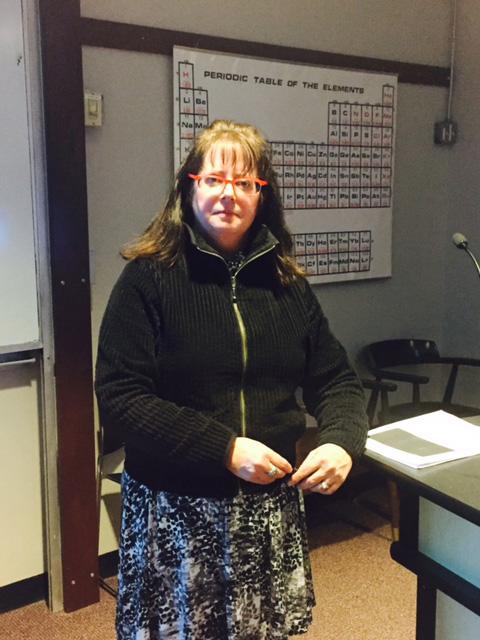Saint John’s Bible paper made by Monadnock Mills
March 29, 2017
Saint Anselm College celebrated Benedictine Heritage Week with a number of events. One of these events was called “Monadnock Paper Mills and the Saint John’s Bible.” The Monadnock Paper Mills is in Bennington, N.H. supplied the paper that was used in the edition of the Saint John’s Bible that is currently on display in Geisel Library.
The edition of The Saint John’s bible on display at the library is called The Heritage Edition, which is a fine art reproduction of the original bible commissioned by Saint John’s University in Minnesota. There are different seven volumes containing different parts of the bible, and the college is displaying the volume that contains the four Gospels and the Acts of the Apostles.
Only 360 of the Heritage Edition volumes were printed. Keith Chevalier, who is the archivist for Saint Anselm College, discovered the connection between the Saint John’s Bible and the paper mills. He recognized that the mill was in New Hampshire and contacted the company for a tour in November 2016, and then an event for Benedictine Heritage Month was arranged.
Lisa Berghaus, the Manager of Marketing and Communications at Monadnock Mills, spoke at the event to explain both the connection between The Heritage Edition of the Saint John’s Bible and the mills as well as what the mills do.
The mill was commissioned to print the paper for the bibles. The bibles were printed on 100% Archival Cotton Paper. The cotton used for this paper is the bit of cotton fiber, called the linter, left over on the seed after the rest of the cotton has been removed. Berghaus explained that this makes for “beautiful, clean, pure white cotton paper that was checked for any impurities and defects.”
 Crier\Madison Trites
Crier\Madison Trites
The Monadnock Paper Mills has been in businesses since 1819 and it is located near the Contoocook River in Bennington N.H. They currently employ over 170 people, and serve businesses in North America, Europe, and Asia. They have made products for companies like Starbucks, Timberland, and Burt’s Bees.
Some of the products they make include bases for sandpaper, medical packaging, wallpaper, and fine arts bibles like what was used for the bible. The mills also make gift cards out of paper that have all the characteristics of the plastic ones, yet are much better for the environment. Producing the gift cards has allowed them to double the size of their company, and they are the foremost supplier of non-plastic gift cards.
The company does other things to make less impact on the environment. The mill can generate up to 50% of their own power using hydropower, where flowing water can be used to harness energy. They also have their own Waste Water Purification Facility. The processed water from the facility is ends up cleaner than the water of the river that it is released back into. The company has also worked to produce paper products to replace plastic products used by the retail and hospitality industries.
The company started out making just one kind of paper which was parchment, but has since evolved to many kinds of papers and products. As for their involvement in the making of The Heritage Edition of the Saint John’s bible, Berghaus says they are “proud to have been a part of the project.”
There are a few other interesting facts about this bible that relate to Benedictine Heritage Week. Brother Isaac, who flips to a new page of the bible to be on display every Friday, says that there is an interesting reason behind the small crosses that occasionally appear in the margins of the bible. The crosses in the margin “indicate each time Saint Benedict quoted from scripture in his Rule of Saint Benedict,” Brother Isaac said. In the Acts of the Apostles section of the bible, there is also a picture that includes a depiction of Both Saint Benedict and Saint Scholastica.
The Saint John’s Bible has been at the college since Oct. 2016 and will continue to be here until Sept. 2017. Some Conversatio, English, Fine Arts, and Theology classes, have had the ability to see the bible in their classes. If the bible has not been presented at one of your classes, and you would like to learn more about the bible there are books next to the display that explain the theology of what is depicted in the bible and facts about the art and the making of the bible. If you want a closer look at the individual pages and artwork in the bible, there is a small edition of the bible that depicts each page of the larger bible. Different pages of the bible are always on display at the library to look at as well.


